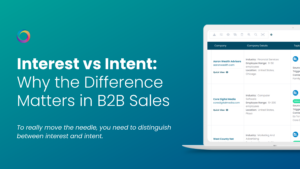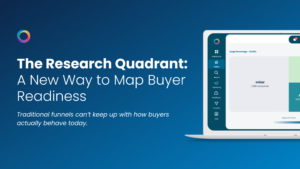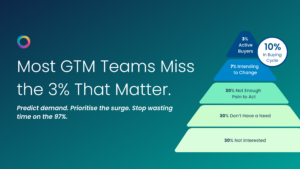With lockdown in full swing, most home workers have had to adapt swiftly to stay connected with their colleagues, managers and customers.
Download statistics and share prices for the US-based, video communications platform Zoom Video have skyrocketed. The day after lockdown was announced share prices in Zoom sharply rose and download figures were clocked at 2.13million that day (average download figures for Zoom pre-Covid19 were 56,000 per day).
Our point here is not to collectively sigh in disappointment at missing a golden investment opportunity, but rather it appears – on the surface at least – that workers who can work from home are getting access to the tools they need to do so.
What about cross-department communications? Sure, there are apps like Slack for quick messaging, Trello and Asana for project management and the Google suite of productivity tools for collaborative writing and spreadsheets but do these cut the mustard for frightfully fragmented teams? I’m talking here about sales and marketing.
FIND OUT HOW WE CAN HELP YOU ALIGN YOUR SALES AND MARKETING THROUGH ZYMPLIFY
The research emphasising the benefits of aligning sales and marketing is there for all to see. This report from Harvard Business Group brings the often misaligned relationship between sales and marketing into stark focus, with the headline being;
There is no question that, when sales and marketing work well together, companies see substantial improvement on important performance metrics: Sales cycles are shorter, market-entry costs go down, and the cost of sales is lower.
So how do we move from an undefined sales and marketing relationship, to an aligned and integrated one?
Let’s look at some key friction causers.
None of the leads marketing sends convert. My time is better spent finding my leads through traditional outbound sales!
A common complaint from sales teams.
When both teams are fragmented, they tend to look at MQL (Marketing Qualified Lead) and SQL Sales Qualified Lead) as different lead sources, as opposed to the overall steps within a defined lead generation process. Aligned sales and marketing teams should be looking at conversion rates right throughout the funnel, end-to-end. Stats show that approx. 25% of SQL leads will convert to closed-won deals and 20% of MQL leads will convert to SQL. If a sales team requires 100 new accounts this quarter, they will need 400 SQL leads which will require 2,000 MQL leads.
One of the first things sales and marketing teams can do to ensure they become aligned is to define common terminology, process and metrics…
Define Common Terminology:
Sales and Marketing have different KPI’s to account for, but ultimately tasked with a shared goal – increase revenues for their organisation. A simple task is to formally agree on what makes an MQL and what makes an SQL and make this visible.
Define Process:
Ensure sales and marketing are not sitting in separate silos by defining a process that creates accountability. Lead scoring allows teams to highlight and prioritise the hottest leads based on their interactions with the business. An effective lead scoring system that works for both departments is one that has been mutually agreed upon.
Define Persona:
Marketing and sales teams should work together to define the target persona groups and make this visible. Zymplify’s persona builder tool allows both departments to visualise and identify key persona groups for sales and marketing activities, acting as a single point of reference that everyone can access. This allows marketing teams to take ownership of high-level tasks such as segmentation, brand imaging and messaging whilst sales teams can engage further down the funnel with a qualified customer group, that they are comfortable working with. Read more about some of our top features like our persona builder here.
Sales do nothing with the leads marketing generates.
Commonly said amongst marketeers, friction is caused here by the lack of visibility across the sales and marketing departments. Frustration builds amongst marketers at the lack of action being taken by sales with the leads they have worked hard to generate.
By increasing visibility, introducing deeper automation into the mix and ensuring accurate lead attribution is occurring trust can be built within both departments.
Automate!
Marketing automation allows marketing teams to build demand, nurture and segment large contact lists more effectively. Traditionally, however, it can only be applied to an organisation's existing database. Zymplify’s suite of automated prospecting tools means that sales teams can work with marketing to define target personas/segments and buying signals to constantly fill the top of the funnel with relevant prospects. Taking the tried and trusted BANT method (Budget, Authority, Need and Timeframe) for lead qualification, Zymplify’s LinkedIn Prospector, Website Intent and Buyer Intent Signals products for automating prospecting can tick off each step ensuring that every lead is qualified. Read more about automation in this automation blog. We've covered the top 3 automated journeys you can put in place, to keep your sales team busy.
Use a Pipeline and CRM
Using a sales pipeline is incredibly important to ensure visibility. Single customer profiles can be viewed immediately for every lead generated, whilst daily activities by sales teams are visible. With everyone now firmly in a working-from-home mindset, recording all activity is doubly important to ensure your teams are not slowing down.
“We need to simplify our workflow. We have different systems for our sales and marketing teams.”
Sales and marketing teams can not only come together in the process but in the tools used also. By integrating all sales and marketing activity into one platform, both departments immediately become more aligned. By ensuring both teams are using the same tools, improvements are seen in the following areas…
Customer Engagement:
The ever-changing B2B landscape is seeing potential customers put off interactions with sales, relying more and more on content to evaluate. When both sales and marketing teams can share tools designed to acquire new customers and have access to single customer views sales teams can meet the customer where they are improving engagement.
Reporting:
Easily attribute closed/won or closed/lost deals to their source to better understand effective marketing activity.
Improve the Handover:
The handover from marketing to sales can be one of the most frustrating steps in the revenue cycle. Agreeing on a process is important, but when working off separate systems the handover can be held back by each system's capability to pass and receive data. A good handover is a seamless one. With a communal, all-in-one tool like Zymplify, the marketing to sales handover happens seamlessly and in real-time. This ensures quick action from sales and retention of each interaction that prospect has had from marketing up to that point.
Ensuring sales and marketing are integrated is a tricky but extremely worthwhile activity for organisations. Now that workers are isolating at home, it is more important than ever. Zymplify’s all-in-one revenue acceleration platform ensures that each department is always aligned throughout every step of the revenue cycle, from generating prospects through to closing and retention.
Don't forget, we're offering free marketing consultations during this current climate, to show you how we can help you boost your business. Click here to find out more.



